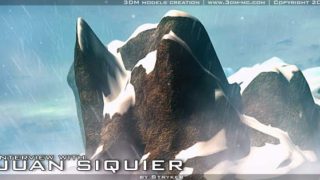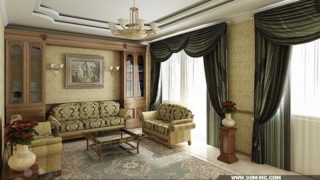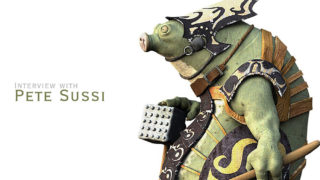
Interview with Esteban Pacheco
My passion for all things 3d started many years ago
Esteban, please, tell us a few words about yourself(age, where you are from, etc).
My name is Esteban Pacheco, I’m 29 years old and I was born and raised in Costa Rica. I’ve been living in the US for 9 years, since I moved to Florida to study art and animation. I currently live in San Francisco, CA and I’m working as a 3d artist at Lucasfilm Animation.

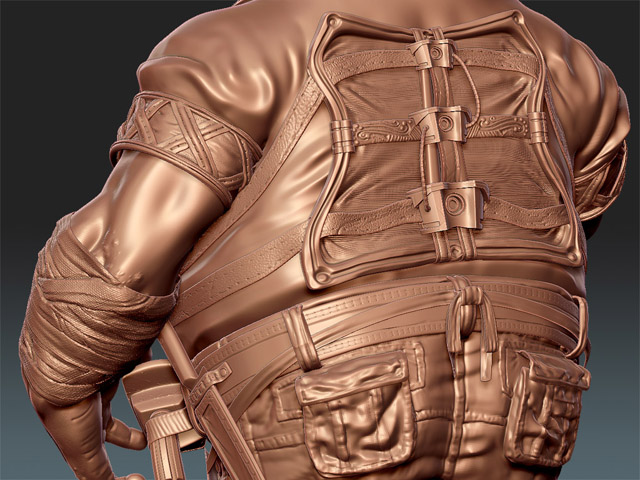
When did you start doing 3D modeling? What was the reason of choosing this occupation? Did you start it as hobby or your aim was to build up a career in this field? What was your first work?
My passion for all things 3d started many years ago when I first played the PC smash hit video game Myst. I was mesmerized by the amazing graphicsOn a trip to the US some years later I got a copy of Computer Arts magazine when I noticed on the cover this super cool 3d wasp tutorial (in formZ!) and the CD that came with it included a demo of Bryce 3d. That’s when I started experimenting with 3d landscapes, lighting, materials, etc. Then I put it off for a couple more years since I never considered that you could study or work in 3d graphics, especially in my home country. Since then, things have changed and I’m glad to see that there are talented people learning 3d graphics and applying them in different areas.
Fast forward to 2007, when I moved to San Francisco where I started my program at the Academy of Art University in 3d modeling. I found out that my interests leaned towards 3d modeling and rendering more than 3d animation. I did some general modeling and animation back in Florida when I was in school, but it wasn’t work that would get me noticed in the film or video game industries.
My first real job was at Virtual 3d, an architectural visualization studio in Boca Raton, Florida, where I worked as a 3d artist working on all phases of each project. Besides the technical skills I gained, the most important lessons I learned were about how to work as a member of a team and meeting deadlines.

The evidence of your talent is your portfolio. I was really impressed by the characters you’ve created. Where do you get the ideas for such amazing works?
I think that inspiration comes from an area between your conscious and subconscious. I pretty much sit down and sketch my ideas starting with a general subject. For example, I might be interested in doing a creature, so then I ask myself what this creature does on a daily basis, where it lives, what it eats, and if it’s a fan of Justin Bieber A back story helps you as an artist to focus on a specific design, instead of just trying to put different things together in a random manner (though, I must admit that sometimes pure instinct works as well!)
Always look for inspiration in movies, games, artists, books, etc. It’s the things you love and admire that influence you as an artist and give you the motivation to create your own art. I am a believer that you are always influenced by the previous work you’ve experienced from other people.

I think it will be interesting to our readers to learn about your work “Jack Nicholson”. How long did you work on it?
The Jack Nicholson bust was my first attempt at modeling a celebrity’s likeness. At first I thought that it would be relatively easy to achieve since I was just replicating something that already existed. But soon I realized that the challenge was much higher than I initially expected, since everyone knows who this person is and how he looks, so I had to portray the essential characteristics of Mr. Nicholson as close as possible to real life. First I had to decide which Jack Nicholson I wanted to model, that is, from which time during his career. I decided to go with the later years and I felt that in order to make this portrait interesting I had to capture his characteristic smile.
I worked on it on and off for about a month, starting with a base head mesh in Maya and then brought it into ZBrush for sculpting, getting feedback from my instructor during the whole process.

What work do you enjoy more: personal or commercial projects? When you are working on personal projects what type of work you like to do?
Personal work is always fun because you are free to develop your own ideas, and this ranges from characters to simple tests that help you develop your skills. Commercial projects are different in the sense that you are working under supervision and normally it’s someone else’s concept so your creative freedom is limited. But that doesn’t mean that it’s no fun at all. If I’m working on a cool project, then I’m motivated to see the final result and the reaction from viewers, and that’s when commercial work really pays off.

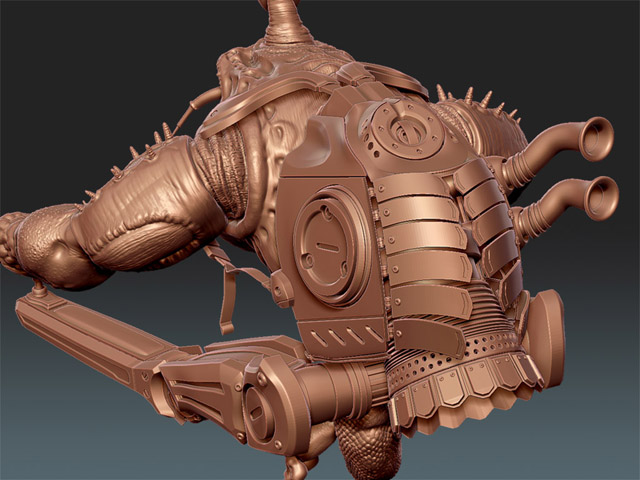
What kind of work are you doing now? Please tell a few words about it.
I’ve been working full time at Lucasfilm Animation as a 3d artist for a year, and that’s been my main focus as far as 3d goes. On the side, I’d like to texture my characters and do a proper render of each one, but I’ll just have to find the time for that at some point!

What do you think is the best work you’ve ever produced? Are you a perfectionist? Does it take you long to achieve that final perfect image you are happy with?
I can’t just pick one at this point, but the most “complete” work I have would be my Aston Martin model. The modeling part was a challenge, but the rendering also took quite a bit of time, especially with all the minor tweaks that happen at that phase. There were days were I just changed parameters one by one (say, materials, or light settings) and pressed the Render button every 10 seconds. A lot of it was done by trial and error, but at the end I had to leave it at some point before I lost my mind
And yes, I like to take care of details, and it does take a while to achieve a result that I’ll be satisfied with. You know what they say: the last 5% takes as long as the other 95%. Though, in reality, I’m never satisfied completely. There’s always room for improvement, but you gotta know when to stop working on a project!

Have you any tricks and your own “know-hows” which you gained with experience during your work? What do you think is the most important thing in the workflow?
There are several things that come to mind, but one of the most important are fundamentals. And by that I mean drawing, anatomy, perspective, composition, color study, etc. You don’t have to become da Vinci, but I do recommend taking a few courses on these subjects, because it not only helps in your 3d work in general, but also allows you to develop your ideas clearly on pen and paper before even booting up your computer (or in Photoshop!) All my characters started as a simple sketch, and from there I refined it enough so that I would have a decent base to start my modeling. And this also brings me to collecting reference: get as much as you can! Search the web for whatever you are working on, buy art books or look at other artists’ work. It’s basically whatever that can help support the development of your ideas.

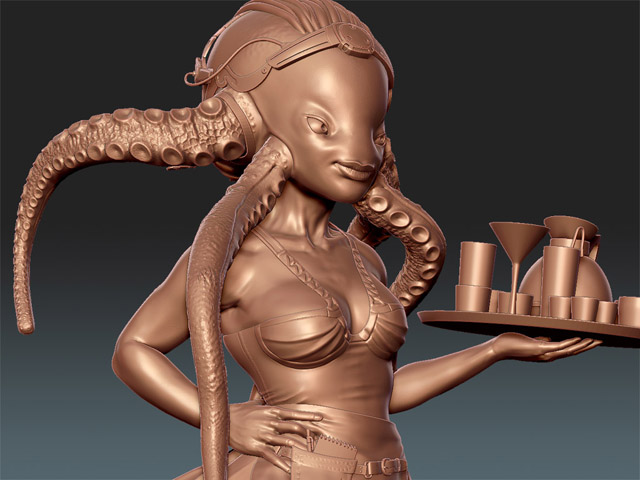
How do you manage to combine your personal life and work? Do you have any hobbies? Is it easy for you to find the time for your family, friends?
Yes and no. Yes, in the sense that I do have time for doing other things I enjoy doing, like getting together with friends, enjoying city life, movies, video games, concerts, etc. But no in the way that I’ve had to prioritize my hobbies and leave some out, like playing guitar or reading books. I also left out my exercise routine, which I’m getting back to since I’ve realized that it’s very important to stay active, especially in an industry like this one where most of the day you’re sitting in front of the computer. Health comes first (even though I don’t always follow this!)

What can you say to inspire those newbies who are just starting to work in CG?
The best way to improve is by practicing and tutorials online and magazines are the best way to do so. You can find anything on any subject on the web and don’t lose focus! I know I can get distracted sometimes!
Also, stay positive and be inspired by all the amazing artists out there. All of them took their time to get to that point and took a lot of criticism in the beginning and even in the present. Remember, improvement comes in little steps and always reward yourself when you notice that you’ve become a better artist.
Take your time working out a good portfolio before applying anywhere and have a presence online (I can’t emphasize this enough). The industry is tough sometimes and finding a job can take some time, but just develop your own style create work that you would enjoy yourself and you’ll see that people will notice you.
Thanks for reading and if you have any questions feel free to contact me.





